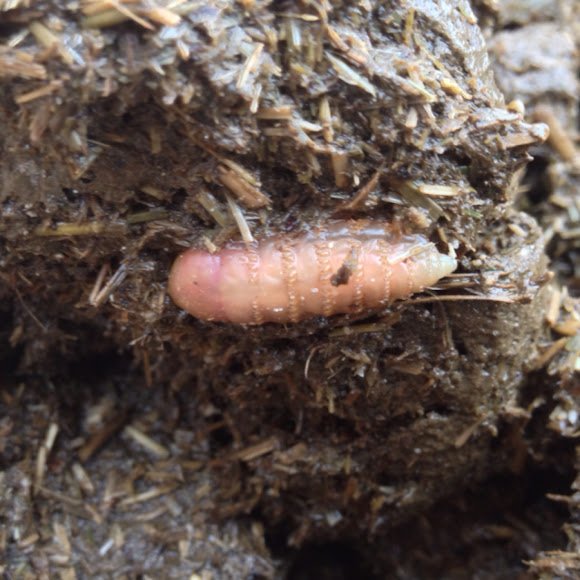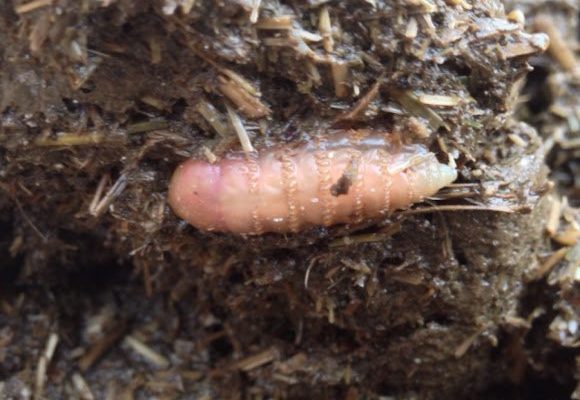
Now, before we dive deeper, let’s get one thing straight: botflies might sound creepy, but they play an important role in their ecosystems. Understanding them helps us appreciate the interconnectedness of life. So, grab your coffee, and let’s explore the intriguing world of botfly larvae and how to teach others about them.
What Are Botfly Larvae?
Botfly larvae are the immature forms of **botflies**, which belong to the family Oestridae. These little creatures have a unique way of developing—they’re parasitic. Unlike many insects that grow from an egg to a larva and into an adult, botfly larvae often develop inside the bodies of their hosts. Think of it like a sci-fi movie where a creature hatches and grows inside another living being.
There are different species of botflies, like the **human botfly** and the **horse botfly**. A common one is the **Dermatobia hominis**, which targets humans and other mammals. When these larvae hatch, they go through an interesting process. They burrow into the skin of their host, creating a small hole where they breathe. If you’ve ever heard the term “warbles,” that refers to the bumps caused by the larvae under the skin.
The Life Cycle of Botflies
Understanding the life cycle of botflies is like reading a wild adventure story. It starts when an adult female botfly lays her eggs on the skin or fur of a host animal, usually a mammal. A fascinating twist is that the **female botfly** often relies on other insects to help her. She will lay her eggs on a blood-feeding insect like a mosquito or a tick. When that insect bites a host, the eggs hatch, and the tiny larvae enter the new host’s body.
Once inside, the larvae start to grow. They can remain in their host for several weeks, feeding on the host’s tissue and blood. Here’s the thing: this does not usually kill the host, but it can cause discomfort and infections. When they’re fully grown, the larvae will make their way out of the host, often creating a small opening in the skin. This is when they pupate in the soil, transforming into adult botflies and starting the cycle all over again.
Why Botfly Education Matters
You might be wondering why it’s important to educate others about botflies and their larvae. Well, understanding these creatures can foster a deeper respect for wildlife and ecosystems. Botflies are often viewed as pests, but they also play roles in maintaining the balance of nature. Teaching about them can shed light on parasitism, evolution, and even animal behavior.
Moreover, educating people helps combat myths and fears. Many assume that all parasites are harmful, but not every interaction in nature is detrimental. By explaining the lifecycle and ecological importance of botflies, we can help people understand their role in the ecosystem instead of just labeling them as nuisances.
Tips for Teaching About Botfly Larvae
When it comes to teaching about botfly larvae, engaging your audience is key. Here are some practical tips to make your lessons informative and fun:
- Use Visual Aids: Incorporate pictures, videos, or even diagrams of the botfly lifecycle. Visuals can stimulate interest and help with understanding.
- Hands-on Activities: Create activities like life cycle mapping or simulations of how bots rely on their hosts. This can make learning interactive and memorable.
- Storytelling: Share interesting stories of encounters with botflies (real or fictional). Personal anecdotes can captivate your audience.
- Address Misconceptions: Be ready to discuss common myths about botflies. Clearing up misunderstandings can enhance learning.
These strategies can transform a simple lesson into an engaging learning experience, leaving your students curious and excited about the natural world.
Creating a Respectful Perspective
With any wildlife education, it’s crucial to foster a sense of respect for all creatures, even those that might seem unpleasant at first glance. Botfly larvae may evoke a shiver, but they are only following their natural instincts. Encouraging empathy is important.
Discuss how parasites fit into the larger ecosystem and why they shouldn’t be exterminated without consideration. You can compare them to more well-known animals. For instance, consider how certain birds rely on parasites to keep their hosts healthy. This intertwining relationship showcases the complexity of nature and helps shift the narrative from fear to respect.
Real-World Impact of Botflies
Teaching about botfly larvae also opens the door to discussions about real-world applications and impacts. For example, botfly larvae can sometimes lead to health issues. In humans and pets, they can cause painful infections, but understanding this can lead to better prevention measures.
Discussing botflies could also lead into conversations about wildlife conservation. Many parasites, including botflies, are indicators of environmental health. If you notice a significant drop in their populations, that could signal bigger ecological problems. Teaching about botflies isn’t just about them; it also serves as a gateway to broader environmental issues that affect us all.
In conclusion, teaching about botfly larvae provides a unique opportunity to delve into the fascinating world of wildlife. It’s all about curiosity and respect for the interconnectedness of life. By sharing the life cycle, ecological roles, and personal stories about botflies, we can foster a deeper understanding and appreciation for these remarkable creatures, no matter how strange they might seem.
So next time you’re sipping coffee and considering wildlife education, remember that even the creepiest critters have a story to tell. With a little creativity and empathy, we can turn fear into fascination, and help others see the beauty in every corner of nature.

